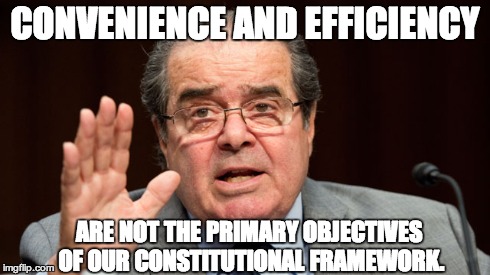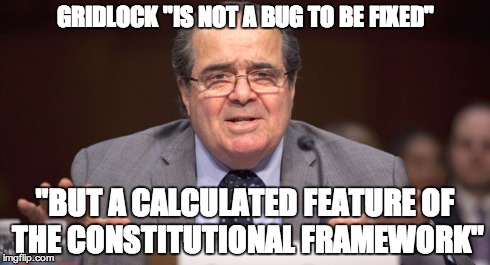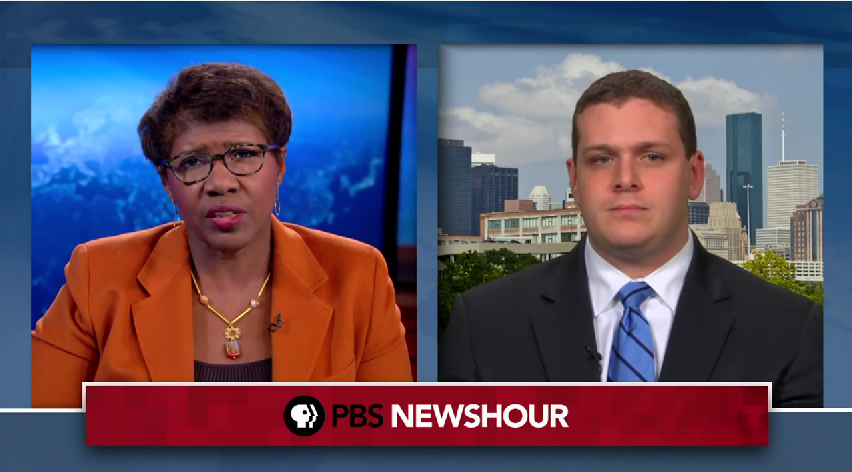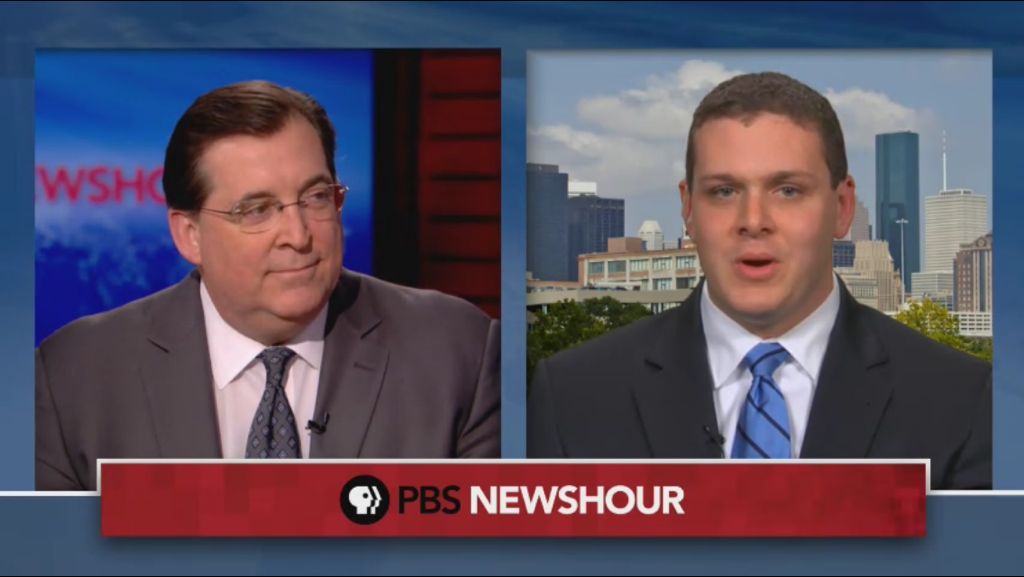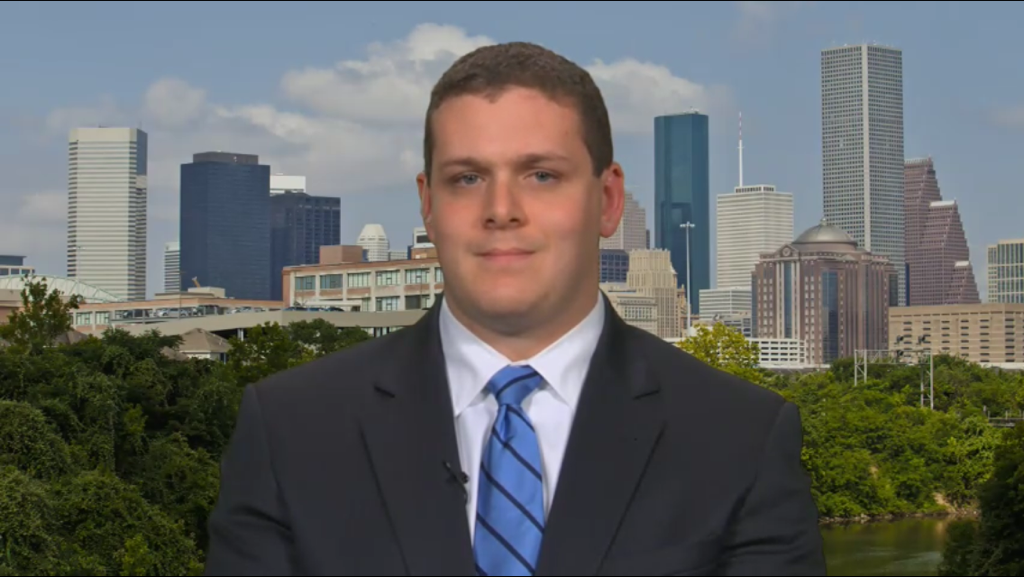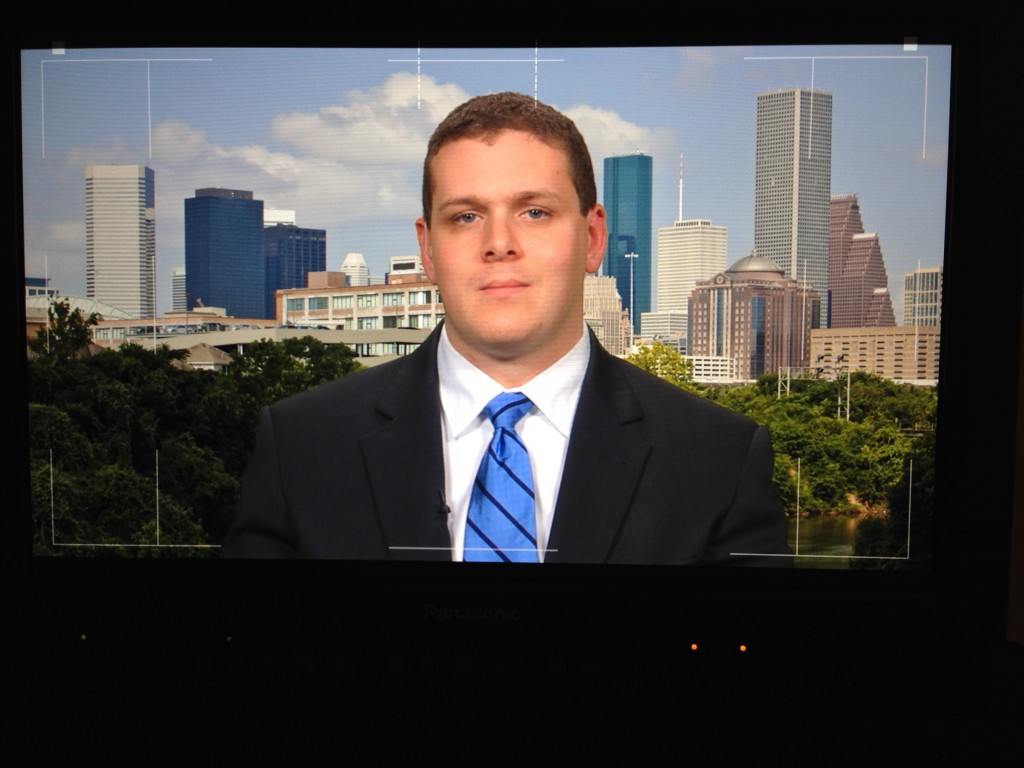I have now had time to read the OLC memo on the President’s immigration policy, and excerpted key segments here. There are number of fascinating insights in this 33-page document.
First, we learn that the President did not obtain an OLC memo for his 2012 DACA program. Rather, only oral advice was given. We also learn that OLC limited DACA, and explained that the deferred action could not be given as a class. Rather it must be given on a case-by-case basis.
Before DACA was announced, our Office was consulted about whether such a program would be legally permissible. As we orally advised, our preliminary view was that such a program would be permissible, provided that immigration officials retained discretion to evaluate each application on an individualized basis. We noted that immigration officials typically consider factors such as having been brought to the United States as a child in exercising their discretion to grant deferred action in individual cases. We explained, however, that extending deferred action to individuals who satisfied these and other specified criteria on a class-wide basis would raise distinct questions not implicated by ad hoc grants of deferred action.We advised that it was critical that, like past policies that made deferred action available to certain classes of aliens, the DACA program require immigration officials to evaluate each application for deferred action on a case-by-case basis, rather than granting deferred action automatically to all applicants who satisfied the threshold eligibility criteria.We also noted that, although the proposed program was predicated on humanitarian concerns that appeared less particular- ized and acute than those underlying certain prior class-wide deferred action programs, the concerns animating DACA were nonetheless consistent with the types of concerns that have customarily guided the exercise of immigration enforcement discretion.
This case-by-case standard is derived from precedents following Heckler v. Chaney.
Finally, lower courts, following Chaney, have indicated that non-enforcement decisions are most comfortably characterized as judicially unreviewable exercises of enforcement discretion when they are made on a case-by-case basis. See, e.g., Kenney v. Glickman, 96 F.3d 1118, 1123 (8th Cir. 1996); Crowley Caribbean Transp., Inc. v. Peña, 37 F.3d 671, 676–77 (D.C. Cir. 1994). That reading of Chaney reflects a conclusion that case-by-case enforcement decisions generally avoid the concerns mentioned above. Courts have noted that “single-shot non- enforcement decisions” almost inevitably rest on “the sort of mingled assessments of fact, policy, and law . . . that are, as Chaney recognizes, peculiarly within the agency’s expertise and discretion.” Crowley Caribbean Transp., 37 F.3d at 676– 77 (emphasis omitted). Individual enforcement decisions made on the basis of case-specific factors are also unlikely to constitute “general polic[ies] that [are] so extreme as to amount to an abdication of [the agency’s] statutory responsibilities.” Id. at 677 (quoting Chaney, 477 U.S. at 833 n.4). That does not mean that all “general policies” respecting non-enforcement are categorically forbidden: Some “general policies” may, for example, merely provide a framework for making individualized, discretionary assessments about whether to initiate enforcement actions in particular cases. Cf. Reno v. Flores, 507 U.S. 292, 313 (1993) (explain- ing that an agency’s use of “reasonable presumptions and generic rules” is not incompatible with a requirement to make individualized determinations). But a general policy of non-enforcement that forecloses the exercise of case-by-case discretion poses “special risks” that the agency has exceeded the bounds of its enforcement discretion. Crowley Caribbean Transp., 37 F.3d at 677.
DOJ draws the line at an “abdication.”
Further, although the proposed policy is not a “single-shot non-enforcement decision,” neither does it amount to an abdication of DHS’s statutory responsibili- ties, or constitute a legislative rule overriding the commands of the substantive statute. Crowley Caribbean Transp., 37 F.3d at 676–77. The proposed policy provides a general framework for exercising enforcement discretion in individual cases, rather than establishing an absolute, inflexible policy of not enforcing the immigration laws in certain categories of cases.
Finally, we have proof that the DOJ OLC placed limits on Obama’s executive power–and he listened, unlike with Libya! (I had been wondering about this for some time).
My one caveat–and I need to study this closer–is whether there is a functional difference where a case-by-case analysis yields a 99% grant rate. If the review becomes something of a rubber stamp, the Heckler standard would not kick in.
Second, based on this initial device, the OLC memo makes a very strong effort at crafting a line between prosecutorial discretion and abuse of discretion. While there are many citations to Hackler v. Chaney, the argument boils down to this point: when deferrals must be made on a case-by-case basis, this does not amount to an abdication of enforcing the law, and a transformation into rewriting the law. This point is made several times but here is a clear restatement:
Immigration officials cannot abdicate their statutory responsibilities under the guise of exercising enforcement discretion. See supra p. 7 (citing Chaney, 470 U.S. at 833 n.4). And any new deferred action program should leave room for individualized evaluation of whether a particular case warrants the expenditure of resources for enforcement. …
The fact that the proposed program would defer the removal of a subset of these removable aliens—a subset that ranks near the bottom of the list of the agency’s removal priorities—thus does not, by itself, demonstrate that the program amounts to an abdication of DHS’s responsibilities. …
This feature of the proposed program ensures that it does not create a categorical entitlement to deferred action that could raise concerns that DHS is either impermissibly attempting to rewrite or categorically declining to enforce the law with respect to a particular group of undocumented aliens.
Third, the memo explains that deferring deportations of parents of U.S. Citizens or Lawfully Present Residents is permissible, because there is a path to citizenship for the parents, through the kids.
And in 1990, INS implemented a “Family Fairness” program that authorized granting extended voluntary departure and work authorization to the estimated 1.5 million spouses and children of aliens who had been granted legal status under the Immigration Reform and Control Act of 1986, Pub. L. No. 99- 603, 100 Stat. 3359 (“IRCA”). See Memorandum for Regional Commissioners, INS, from Gene McNary, Commissioner, INS, Re: Family Fairness: Guidelines for Voluntary Departure under 8 CFR 242.5 for the Ineligible Spouses and Children of Legalized Aliens (Feb. 2, 1990) (“Family Fairness Memorandum”); see also CRS Immigration Report at 10.
This is the argument I made concerning President George H.W. Bush’s deferrals. They are effectively temporary stopgap measures to prevent splitting up families where the parents will eventually have a pathway to citizenship.
The key difference between George H.W. Bush’s deferrals, and this one, is that these may last as long as 21 years, as children have to wait till they turn 21 to petition for visas for their parents. The H.W. Bush deferrals lasted maybe two years. But still, the legal principle behind the G.W. Bush deferrals extends here.
Finally, the proposed deferred action program would resemble in material respects the kinds of deferred action programs Congress has implicitly approved in the past, which provides some indication that the proposal is consonant not only with interests reflected in immigration law as a general matter, but also with congressional understandings about the permissible uses of deferred action. As noted above, the program uses deferred action as an interim measure for a group of aliens to whom Congress has given a prospective entitlement to lawful immi- gration status. While Congress has provided a path to lawful status for the parents of U.S. citizens and LPRs, the process of obtaining that status “takes time.” Cuellar de Osorio, 134 S. Ct. at 2199. The proposed program would provide a mechanism for families to remain together, depending on their circumstances, for some or all of the intervening period.
Parents of U.S. Citizens will generally have to wait till the child is 21.
The INA provides a path to lawful status for the parents, as well as other immedi- ate relatives, of U.S. citizens: U.S. citizens aged twenty-one or over may petition for parents to obtain visas that would permit them to enter and permanently reside in the United States, and there is no limit on the overall number of such petitions that may be granted. See 8 U.S.C. § 1151(b)(2)(A)(i); see also Cuellar de Osorio, 134 S. Ct. at 2197–99 (describing the process for obtaining a family-based immigrant visa).
Fourth, the memo makes clear that the parents of the DACA recipients are not eligible for deferrals due to the very important reason I noted yesterday–they do not have a pathway to citizenship. Therefore, this would not be a temporary gap.
But the proposed program for parents of DACA recipients is unlike the pro- posed program for parents of U.S. citizens and LPRs in two critical respects. First, although DHS justifies the proposed program in large part based on considerations of family unity, the parents of DACA recipients are differently situated from the parents of U.S. citizens and LPRs under the family-related provisions of the immigration law. …
Granting deferred action to the parents of DACA recipients would not operate as an interim measure for individuals to whom Congress has given a prospective entitlement to lawful status. Such parents have no special prospect of obtaining visas, since Congress has not enabled them to self-petition—as it has for VAWA self-petitioners and individuals eligible for T or U visas—or enabled their undocumented children to petition for visas on their behalf. Nor would granting deferred action to parents of DACA recipients, at least in the absence of other factors, serve interests that are comparable to those that have prompted implemen- tation of deferred action programs in the past. Family unity is, as we have discussed, a significant humanitarian concern that underlies many provisions of the INA.
This is exactly right. In the absence of a pathway to citizenship, the deferrals do not make sense.
Fifth, the memo address whether size matters. In effect, addressing whether this unprecedented expansion of power is lawful. First, it concedes that the size of the program exceeds that of any previous deferred action. This is correct, and rebuts the cable news talking point that this is perfectly consistent with what H.W. Bush did.
We recognize that the proposed program would likely differ in size from these prior deferred action programs. Although DHS has indicated that there is no reliable way to know how many eligible aliens would actually apply for or would be likely to receive deferred action following individualized consideration under the proposed program, it has informed us that approximately 4 million individuals could be eligible to apply. See Shahoulian E-mail. We have thus considered whether the size of the program alone sets it at odds with congressional policy or the Executive’s duties under the Take Care Clause.
In short, they argue that because a number cannot be easily drawn, they will not.
In the absence of express statutory guidance, it is difficult to say exactly how the program’s potential size bears on its permissibility as an exercise of executive enforcement discretion. But because the size of DHS’s proposed program corresponds to the size of a popula- tion to which Congress has granted a prospective entitlement to lawful status without numerical restriction, it seems to us difficult to sustain an argument, based on numbers alone, that DHS’s proposal to grant a limited form of administrative relief as a temporary interim measure exceeds its enforcement discretion under the INA.
Next, they try to put the number in context, explaining that H.W. Bush’s 1.5 million was a greater percentage of unlawful immigrants at the time.
Furthermore, while the potential size of the program is large, it is neverthe- less only a fraction of the approximately 11 million undocumented aliens who remain in the United States each year because DHS lacks the resources to remove them; and, as we have indicated, the program is limited to individuals who would be unlikely to be removed under DHS’s proposed prioritization policy. There is thus little practical danger that the program, simply by virtue of its size, will impede removals that would otherwise occur in its absence. And although we are aware of no prior exercises of deferred action of the size contemplated here, INS’s 1990 Family Fairness policy, which Congress later implicitly approved, made a comparable fraction of undocumented aliens—approximately four in ten— potentially eligible for discretionary extended voluntary departure relief. Compare CRS Immigration Report at 22 (estimating the Family Fairness policy extended to 1.5 million undocumented aliens), with Office of Policy and Planning, INS, Estimates of the Unauthorized Immigrant Population Residing in the United States: 1990 to 2000 at 10 (2003) (estimating an undocumented alien population of 3.5 million in 1990); see supra notes 5 & 15 (discussing extended voluntary departure and Congress’s implicit approval of the Family Fairness policy). This suggests that DHS’s proposed deferred action program is not, simply by virtue of its relative size, inconsistent with what Congress has previously considered a permissible exercise of enforcement discretion in the immigration context.
I pause to note that this is a remarkable limitation imposed by OLC on the President’s power. I am very glad to see this actually exists. Though, it seems that DHS was okay with this authority.
Sixth, the memo repeats at several points a discussion of acquiescence. Congress has acquiesced to the President’s deferred action, and given the Executive a de facto license of sorts to proceed.
Congress has long been aware of the practice of granting deferred action, in- cluding in its categorical variety, and of its salient features; and it has never acted to disapprove or limit the practice.9 On the contrary, it has enacted several pieces of legislation that have either assumed that deferred action would be available in certain circumstances, or expressly directed that deferred action be extended to certain categories of aliens.
It specifically makes a Dames & Moore argument concerning acquiescence:
Apart from the considerations just discussed, perhaps the clearest indication that these features of deferred action programs are not per se impermissible is the fact that Congress, aware of these features, has repeatedly enacted legislation appearing to endorse such programs. As discussed above, Congress has not only directed that certain classes of aliens be made eligible for deferred action pro- grams—and in at least one instance, in the case of VAWA beneficiaries, directed the expansion of an existing program—but also ranked evidence of approved deferred action status as evidence of “lawful status” for purposes of the REAL ID Act. These enactments strongly suggest that when DHS in the past has decided to grant deferred action to an individual or class of individuals, it has been acting in a manner consistent with congressional policy “‘rather than embarking on a frolic of its own.’” United States v. Riverside Bayview Homes, Inc., 474 U.S. 121, 139 (1985) (quoting Red Lion Broad. Co. v. FCC, 395 U.S. 367, 375 (1969)); cf. id. at 137–39 (concluding that Congress acquiesced in an agency’s assertion of regulato- ry authority by “refus[ing] . . . to overrule” the agency’s view after it was specifi- cally “brought to Congress’[s] attention,” and further finding implicit congression- al approval in legislation that appeared to acknowledge the regulatory authority in question); Dames & Moore v. Regan, 453 U.S. 654, 680 (1981) (finding that Congress “implicitly approved the practice of claim settlement by executive agreement” by enacting the International Claims Settlement Act of 1949, which “create[d] a procedure to implement” those very agreements).
Seventh, in perhaps an indirect reference to attempts to defund the program, the memo notes that the action would be “borne almost entirely” by application fees–something Congress arguably cannot touch. I don’t think this point was inadvertent, as there are already debates about whether program can be defunded.
The deferred action program DHS proposes would not, of course, be costless. Processing applications for deferred action and its renewal requires manpower and resources. See Arizona, 132 S. Ct. at 2521 (Scalia, J., concurring in part and dissenting in part). But DHS has informed us that the costs of administering the proposed program would be borne almost entirely by USCIS through the collec- tion of application fees. See Shahoulian E-mail; see also 8 U.S.C. § 1356(m); 8 C.F.R. § 103.7(b)(1)(i)(C), (b)(1)(i)(HH). DHS has indicated that the costs of administering the deferred action program would therefore not detract in any significant way from the resources available to ICE and CBP—the enforcement arms of DHS—which rely on money appropriated by Congress to fund their operations. See Shahoulian E-mail. DHS has explained that, if anything, the proposed deferred action program might increase ICE’s and CBP’s efficiency by in effect using USCIS’s fee-funded resources to enable those enforcement divisions to more easily identify non-priority aliens and focus their resources on pursuing aliens who are strong candidates for removal. See id. The proposed program, in short, might help DHS address its severe resource limitations, and at the very least likely would not exacerbate them. See id.
Eighth, as for the line-drawing issue, the memo seems to acknowledge that Youngstown controls, and that executive discretion cannot be absolute.
Immigration officials’ discretion in enforcing the laws is not, however, unlimited. Limits on enforcement discretion are both implicit in, and fundamental to, the Constitution’s allocation of governmental powers between the two political branches. See, e.g., Youngstown Sheet & Tube Co. v. Sawyer, 343 U.S. 579, 587– 88 (1952). These limits, however, are not clearly defined. The open-ended nature of the inquiry under the Take Care Clause—whether a particular exercise of discretion is “faithful[]” to the law enacted by Congress—does not lend itself easily to the application of set formulas or bright-line rules.
I will withhold further judgment so I can consider the details more. I am slated to write an editorial in the Sunday L.A. Times on this topic, and a piece in National Review as well.
